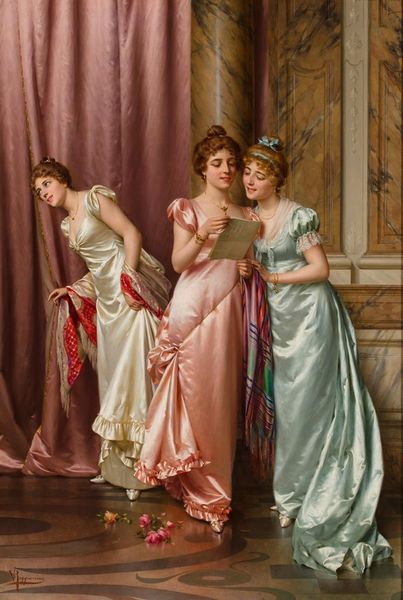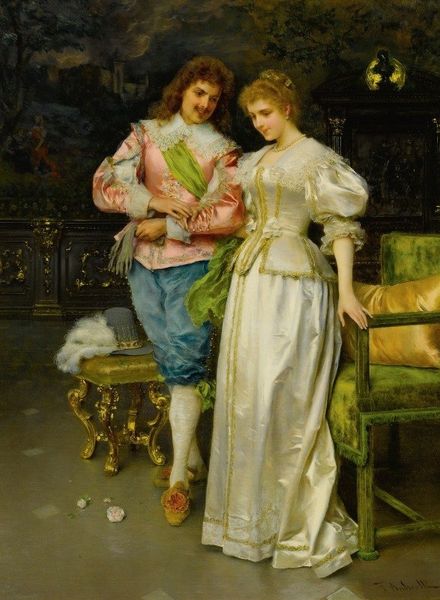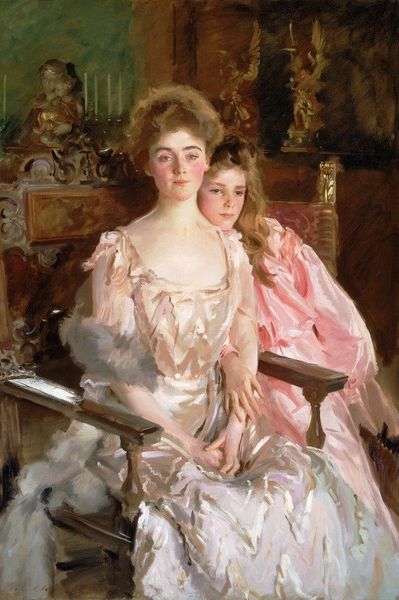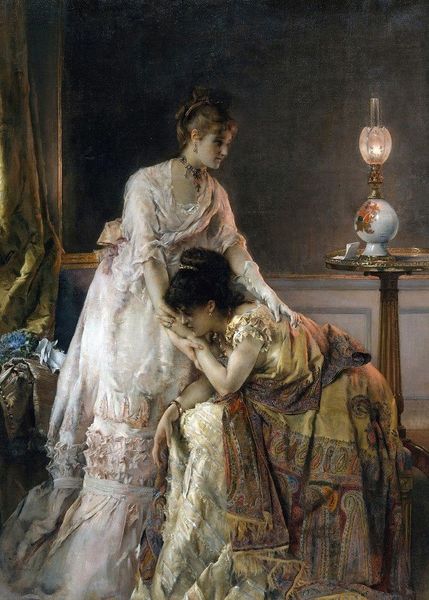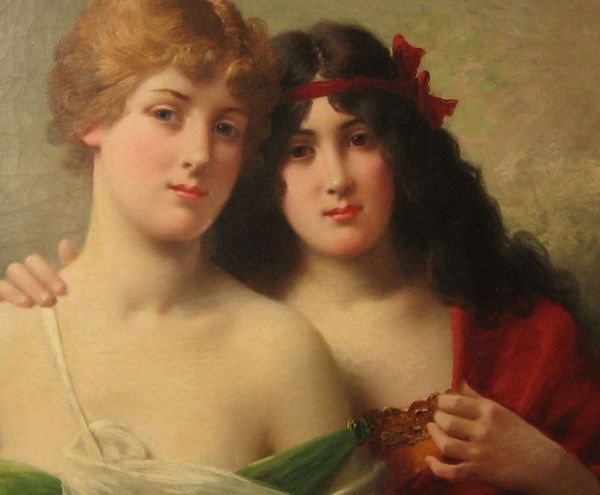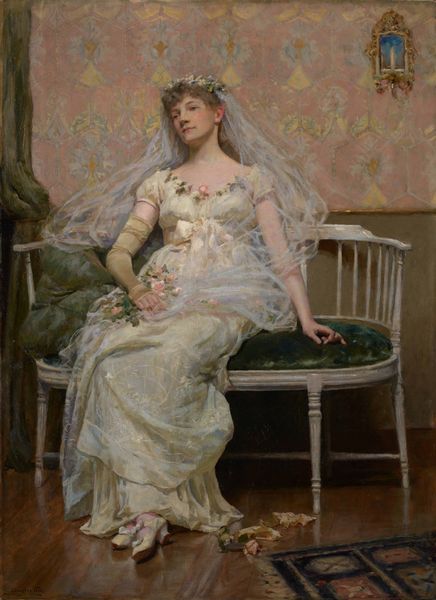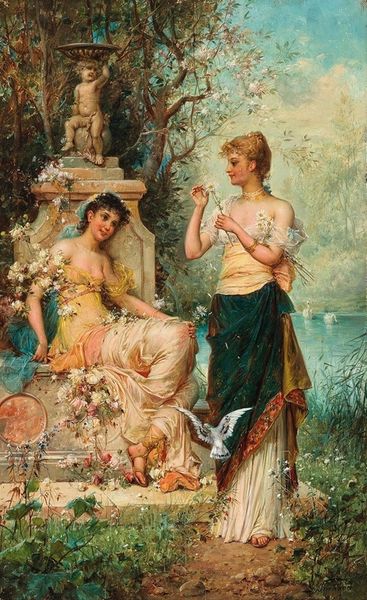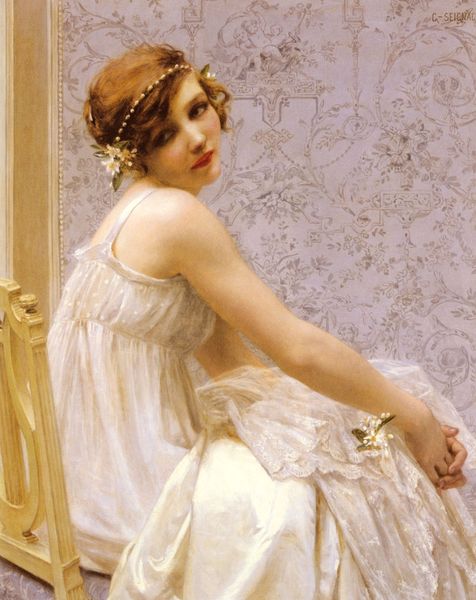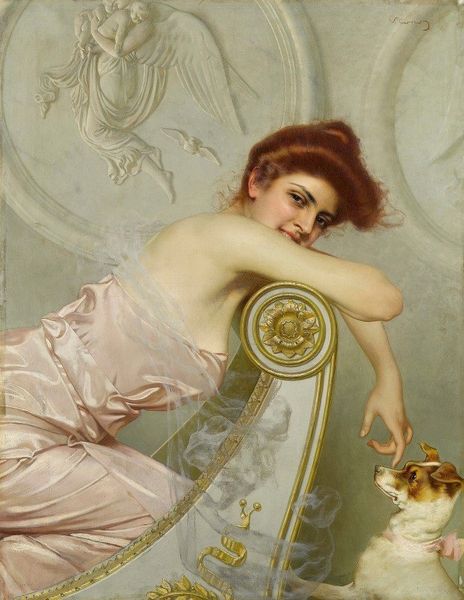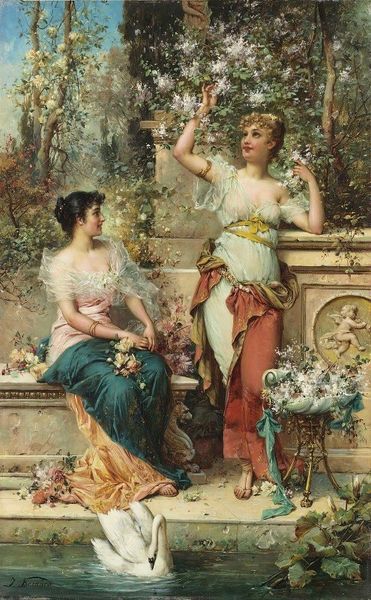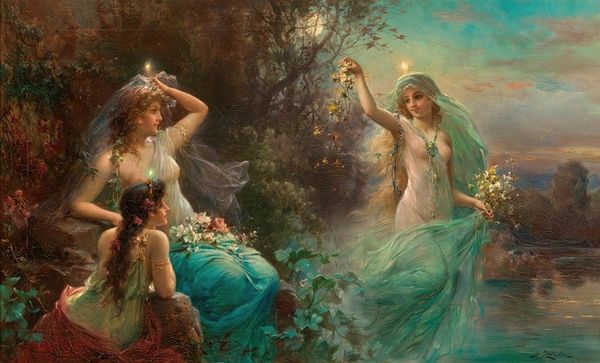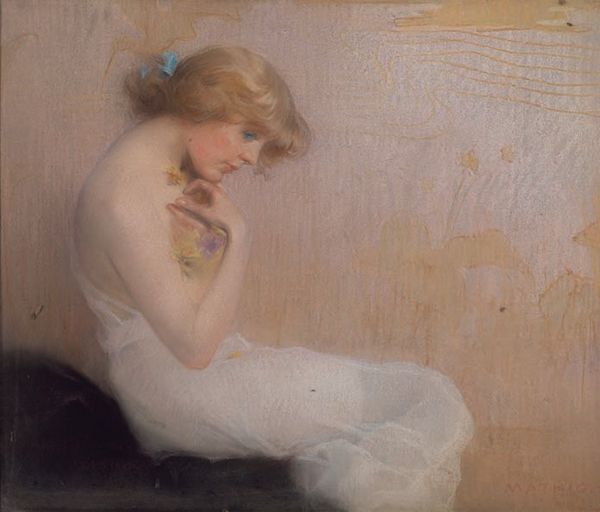
Copyright: Public Domain: Artvee
Curator: Vittorio Matteo Corcos painted "The Three Aces" in 1891, employing oil on canvas to depict an intimate scene. What strikes you most about this composition? Editor: Initially, the muted color palette creates a somber yet elegant mood. The diffused light lends the subjects an almost ethereal quality, further enhanced by the soft, feathery textures of their gowns. Curator: This piece speaks to a moment of leisure and social interaction. The young women's clothing can be viewed within a specific class structure, and perhaps a reflection on expectations placed upon them. Editor: Agreed, and observing their attire more closely, the artist meticulously renders each fold and ruffle. Note how he uses impasto techniques to add depth to the fabric's sheen, emphasizing the interplay of light and shadow. The textures add sensuality to the female form. Curator: Indeed, though it’s hard not to consider that this is a voyeuristic depiction and objectification of women, typical for the era. One watches, while the other participates, while we the observers watch them. Editor: While context enriches meaning, the positioning also gives form to a triangular configuration—two figures against a softly patterned wall create a sophisticated arrangement with delicate lines, the viewer being in complicity. Curator: Certainly. Also consider how elements of playfulness like the wallpaper adorned with birds offer a contrasting visual commentary. It also raises questions of domestic confinement versus a flight of freedom, something relevant to this historical setting, but certainly, for these two individuals of implied stature and wealth. Editor: Their soft rendering and nuanced detail are captivating. Overall, it encourages sustained contemplation, no doubt informed by our exchange. Curator: Absolutely. "The Three Aces," while seemingly a straightforward genre painting, offers rich ground for exploration on the complex relationship between the work, its context, and ourselves.
Comments
No comments
Be the first to comment and join the conversation on the ultimate creative platform.
